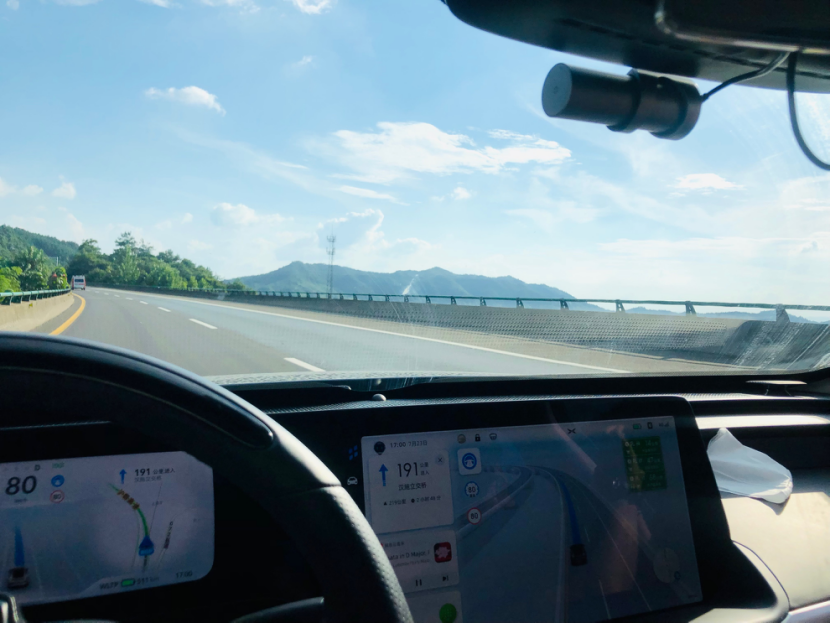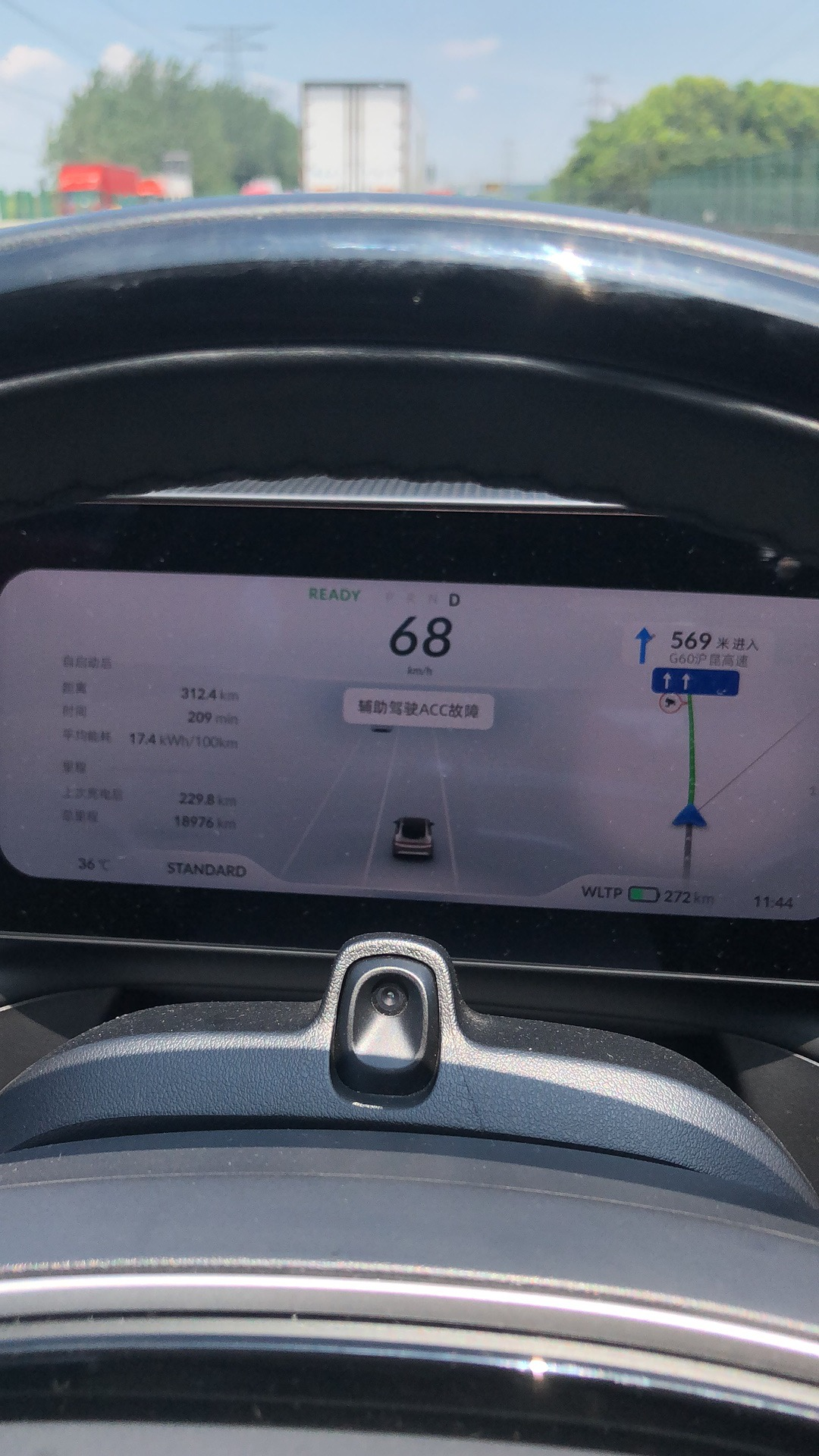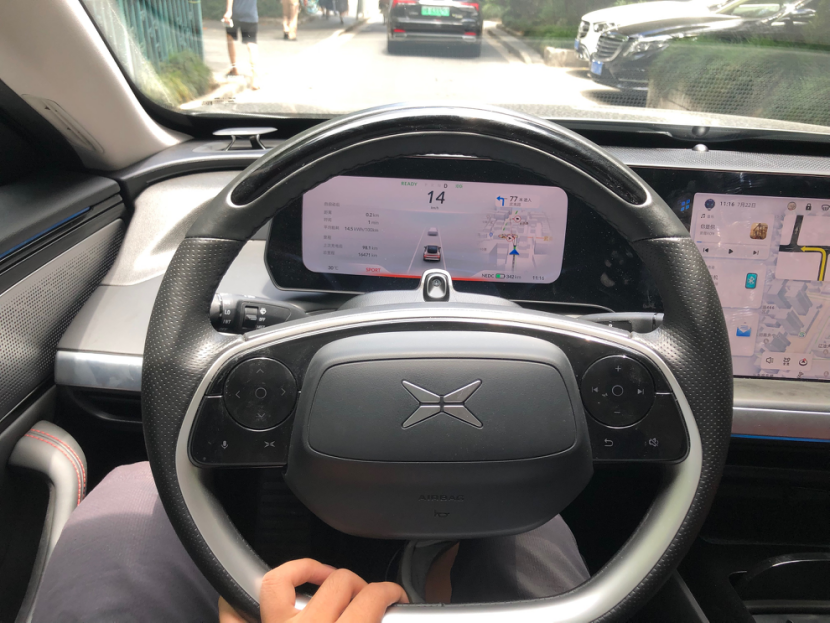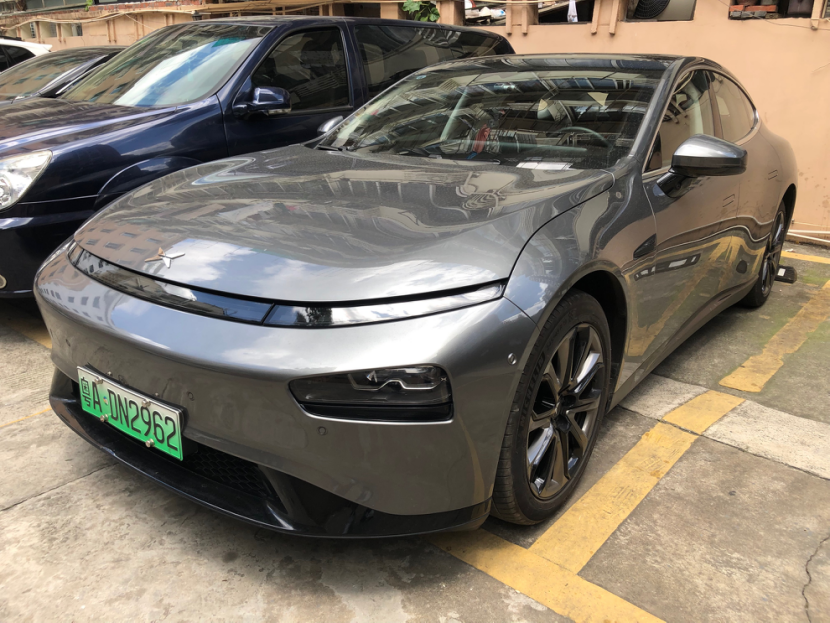First of all, I would like to express my gratitude to Garage 42 and XPeng Motors for inviting me to participate in the 7-day deep testing of XPeng P7.
To fully experience the power of XPeng P7, I drove it on a self-driving tour from Wuhan to Changsha on the second day of the testing. Before the trip, while waiting for the charging, I took the opportunity to carefully appreciate the interior design and workmanship of the flagship model of the new domestic automaker XPeng. Actually, I have already “touched” it countless times in offline stores, and I no longer have the excitement I had when I first saw it at the launch event.
The 10.25-inch full LCD instrument panel and 14.96-inch center control screen are considered the “standard configuration” of the new forces, although it also follows the minimalist design style of northern Europe, XPeng P7 is not as “ultimate” as Model 3, and still retains enough detailed designs to enhance the public’s acceptance. The vehicle’s leather seats, with main driver’s 8-way power adjustment, seat memory, heating, and ventilation, are at least qualified in creating a luxurious atmosphere. Moreover, the test car I was driving was also equipped with a 18,000 yuan Bang & Olufsen sound system. With P7’s good NVH (noise, vibration, harshness) control, driving and listening to music is truly enjoyable. The overhead two large panoramic sunroofs offer full visibility, comparable to that of NIO EC6 (except that P7 has one more cross-beam). While there is no sunshade, in my personal opinion, it can effectively isolate heat and ultraviolet rays, and I didn’t feel like being exposed to direct sunlight even driving under a big sun, in contrast with the transparent windows of un-tinted cars around (yes, I did get some sun exposure). However, it is worth mentioning that the legroom in the rear seats of P7 is slightly cramped, and if you want to stretch your legs comfortably, it will occupy some of the rear space (for reference, I am 175cm tall). The leg support for the front seats of P7 is well designed, but the rear ones are still not enough for passengers during long-distance rides, which may cause slight discomfort. If the rear seat angle can be adjusted and made softer, then P7 would have made another step in comfort at this price range.
As for the exterior design of XPeng P7, it deeply impressed me, looking quite futuristic and unique, without falling into the common. The starry-eyed headlamp and customizable lighting language are easy to identify on the road at night, and it is the type of car that can cause heads to turn on the street.The driving experience of the XPeng P7 in terms of handling and performance did not impress me as much as its impressive advanced driving assistance and intelligent voice control features. However, the XPeng P7 has decent mechanical specs, including front double-wishbone and rear multi-link suspension, and front six-piston and rear four-piston Brembo calipers, making it a high-end automotive configuration. The steering of the P7 can be adjusted to low, medium and high modes, and most of the time I used the standard mode. The steering wheel feels light and smooth with a linear gain, making it easy to handle lane changes and overtaking.
In terms of design, the XPeng P7 looks sporty and aggressive, but the engineers may have tried too hard to balance performance and comfort, resulting in a conflicting suspension setting. The suspension feels tight and responsive at low speeds, but somewhat soft and bouncy at high speeds, especially on undulating roads. The energy recovery system of the P7 is not strong enough in standard driving mode, but the ECO mode provides a stronger drag effect, which is more friendly to passengers. The single-pedal driving mode is still controversial, and different preferences exist.
As one of China’s leading new automakers, XPeng has made great strides in intelligent driving, especially with the NGP system that combines high-precision maps for advanced driving assistance. After logging in to the personal account on the vehicle system, the NGP system requires a seven- or eight-minute operation training video for safety reasons. It can be activated by flicking the right-hand gear lever twice. If the route does not support high-precision maps, the NGP system will be downgraded to LCC+ACC mode.Actually, Xiao Peng’s ACC adaptive cruise control is already very mature. It can recognize the vehicle in front of it from a distance of over 100 meters and visualize it on the dashboard. It can anticipate acceleration and deceleration, and the acceleration and deceleration process is very linear and smooth, which will not make you feel uncomfortable or unsafe. It is worth mentioning that even if the following distance is set to the minimum, the distance is still relatively large (about one parking space). Although safety redundancy can be achieved, being “cut in” is still unavoidable. Xiao Peng’s LCC lane centered control function is turned on the same way as the NGP, by pulling the right shift lever twice in a row (ACC is only once). The first experience of P7’s LCC lane keeping function is really amazing, with first-rate stability. There have been basically no situations where the lane line is drawn longer or too close to one side of the lane line. It is like a wonderful warning in high speed driving and greatly relieves my fatigue in long-distance driving. Even when the NGP is not turned on, in the case of LCC being turned on, the P7 also has the ALC automatic lane changing assistance function. As long as the turn signal is activated to one side, the car will automatically judge whether the other lane has lane-changing conditions and whether there is a car approaching from behind. If the conditions are met, the car will quickly change lanes to one side, with a bit of acceleration in the process, which feels quite like an experienced driver. Of course, Xiao Peng’s genius is to combine these auxiliary driving functions with high-precision map navigation, further reducing manual intervention and enhancing the intelligent experience.When NGP is enabled, the navigation interface of the central control also changes. It can show the situation of the vehicle’s current lane in real-time, regardless of automatic lane changing or ramp driving, which is visualized and accompanied by voice prompts. This greatly enhances my trust in its assisted driving ability. What’s more thoughtful is that when a large vehicle approaches one side, the P7 can actively identify and provide a reminder on the navigation interface, making slight avoidance maneuvers to the other side. When the vehicle’s speed exceeds 125 km/h, all assisted driving functions will exit, and the vehicle will sound an alarm, with a voice prompt to take over the vehicle. The seat belt will also tighten three times consecutively to remind the driver. It must be said that the various prompts of XPeng during the exit phase of assisted driving functions are still very comprehensive. Although NGP has already surpassed competitors in the current experience and challenges Tesla, I personally think that there is still room for improvement. XPeng’s recognition ability with respect to solid and dashed lines on the lane still needs to be strengthened, as there were several instances where NGP wanted to change lanes on a solid line during the experience. In addition, in terms of monitoring the driver’s driving state, although P7 has a camera identification and a steering wheel torque identification, the two are decoupled. If they could be combined to judge the experience, it would be better. Sometimes, even when I have my hands on the steering wheel, XPeng also reminds me to turn the steering wheel frequently. On the last day of the test drive, there was a small incident where the ACC function of the P7 suddenly failed and could not be turned on, causing the NGP to also fail to start. Since it was driving overnight, after multiple restarts failed, I could only concentrate and drive all the way back to Shanghai manually without assisted driving assistance, which was quite “sour” during the long-distance drive.
Speaking of XPeng, XPeng’s all-scene voice assistant is also one of its major selling points. At the beginning of the experience, I really wasn’t used to it, and had to subconsciously look for it on the big screen to operate. However, it is so strong that it can basically recognize anything on the screen, and what it says is what it gets. Later, I basically relied on speaking to operate something, and even in driving state, it really isn’t convenient to use hands. Even under NGP status, when I said “Hello XPeng, please help me overtake,” it could immediately recognize and complete the task. Can you handle that? However, there is still room for improvement. XPeng only supports main and co-pilot driving voice wake-up, which has led some passengers in the back seat to strongly protest. In addition, XPeng’s recognition accuracy is not high enough at present (although it already feels that it is compared to Xiaoai). Cooperation with the vehicle software side also needs to be improved. For example, I have already opened NetEase Cloud Music and want XPeng to find a song, but it still uses the built-in Kuwo Music to find and play the song. It is said that the next version of XPeng will switch its voice through OTA, using AI algorithms to approach real human voice. Okay, I admit that XPeng is even better now.



This self-driving journey of over 2,400 kilometers has truly changed my stereotype that electric cars cannot run long distances, and deepened my belief that I must choose a smart electric car for future purchases. The P7 I test drove has a range of up to 670 km using NEDC and 550 km using WLTP, and the battery life on the highway is basically 90% of the range. It is very reliable and there is no range anxiety even when not racing against time. I stopped to charge and rest at service areas, and all the charging was done at third-party charging stations, costing a total of 698 yuan, which is significantly cheaper than gasoline-powered cars. Therefore, overall, as electric cars are the trend of the industry, the cost of use and driving experience will surely continue to get better and better. I am optimistic about new energy and optimistic about XPeng!

Finally, I would like to thank Garage 42 and XPeng Motors for providing me with this opportunity to participate in the user testing. I hope that Garage 42 will continue to improve and XPeng Motors will become the “Tesla” of China soon!
This article is a translation by ChatGPT of a Chinese report from 42HOW. If you have any questions about it, please email bd@42how.com.
